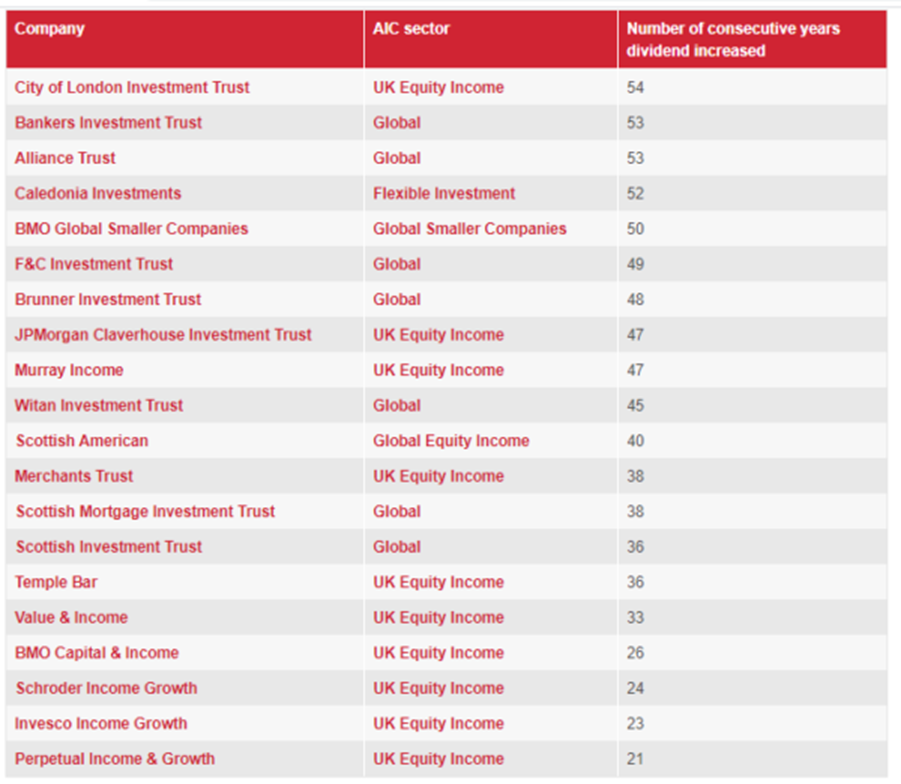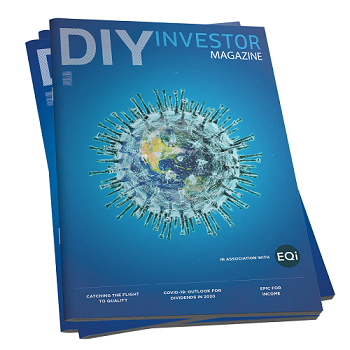Investing Basics: how to choose an investment trust
Most people are broadly familiar with the concept of a ‘fund’ when it comes to investing but, there are a number of different fund types – writes Christian Leeming.
Funds broadly divide between those that are actively managed, aiming to out-performing the market or a benchmark index such as unit trusts, OEICs and investment trusts, and those that passively track an index or sector such as exchange traded funds.
Proponents of the former believe their generally higher fees are justified by superior performance, whilst those opting for a passive approach believe that keeping costs low is key to investment performance.
Within active funds there are ‘open ended’ funds which create or cancel units in response to demand and ‘closed ended’ investment companies – investment trusts – which issue a defined number of shares and trade like any other company on an exchange.
Investment trusts were once dubbed the ‘best kept secret in the City’, but not any more it seems, as investors have embraced the fact that some trusts have consistently increased their dividends over decades and have done so in the face of enormous headwinds – just one of which is the current COVID-19 pandemic.
Often overlooked, investment trusts have existed for over 150 years; there is currently £200 billion invested in investment trusts, a figure that has doubled in less than ten years.
Whilst similar to open-ended vehicles, such as unit trusts and OEICs, investment trusts exhibit a number of attractive characteristics that make them worthy of consideration, and the reason they are attracting wider attention and at an ever-increasing rate.
Once you’ve decided that investment trusts might prove to be a valuable addition to your portfolio, the challenge is to select one or more specific trusts to suit your objectives.
There are over 400 investment trusts trading on the UK stock market, so there’s plenty of choice; this article explains how best to go about reducing that universe to a more manageable number, before undertaking in-depth research to arrive at a final selection.
These are broadly the steps you should take:
Trust the experts
Founded in 1932 to further the interests of the investment trust industry, The Association of Investment Companies (AIC) is its pre-eminent trade association; when it comes to selection, AIC has already done much of the the ‘heavy lifting’ and has detailed information regarding all investment trusts listed on the UK stock market.
The section headed ‘Find and compare investment companies‘ allows you to filter your selection by a range of criteria, such as geographic region, investment need (growth, income etc) and specific sector (eg North American Smaller Companies).
Set your goals
Investment returns are delivered in three different ways: capital growth (an increase in the share price), income (the payment of dividends), or a combination of the two.
The nature of the return you’re seeking is likely to be driven largely by your personal circumstances; an individual in their 30s with a longer-term investment horizon may be able to accommodate higher risk share-based investments designed to generate capital growth, whereas someone nearing retirement is likely to be contemplating lower risk investments delivering more predictable income.
Approximately 85% of investment trusts pay a dividend, although most will try to grow the value of capital each year as well.
A key metric is the ‘dividend yield’ delivered by a trust, which is the annual dividend payments expressed as a percentage of the current share price
This will vary substantially between trusts – from under 1% pa in some cases to over 10% pa in others – and so, if income is a priority, this is the level of granularity you’ll need to achieve with your research.
AIC also publishes its annual list of ‘Dividend Heroes’: those investment companies which have consistently increased their dividends for 20 or more years in a row.
In the challenging market conditions we’re now confronting, and with interest rates close to record lows, the reliability of income streams has rarely been more important.
21 investment trusts succeeded in making it to the current list, announced in March 2020 but, of those, four trusts had raised their dividends consistently for over half a century.


 Source – AIC
Source – AIC
Select a region and asset type
Do you want to invest in a specific country (eg North America), a region (eg Asia) or globally?
What asset type do you want to invest in: shares or fixed income such as government and corporate bonds, or possibly something slightly more esoteric such as private equity or musical intellectual property rights?
Do you want to invest across a broad range of industries or retain a focus on a particular sector, like financials or technology?
AIC has made life considerably easier by categorising the 400 or so investment trusts into roughly 50 sectors, allowing you to filter your selection in a highly tailored way – examples of these sectors would include Asia Pacific Income, European Emerging Markets, Global Equity Income and Japan.
Needless to say, there’s a sector for almost every conceivable investment need; see more detail about AIC categories at Investing Basics: Investment trust sectors
AIC’s categorisations are quite broad and certain investment trusts choose to define themselves in a more focused way; for example, a trust might fall within the ‘Global’ sector but, on studying the trust’s investment objective, you could discover that its investment scope is restricted to, say, larger companies.
An investment trust will typically display this information very clearly on its website.
No guarantee, but….
As any good disclaimer will tell you, past performance is not necessarily a guide to the future; however, it’s generally prudent to look at an investment trust’s track record versus its peer group – particularly over the long term – in that it may provide a degree of reassurance as to the manager’s abilities.
You’d have to question the wisdom of an investment strategy built around trusts with a prolonged tendency to underperform!
The AIC can help you out here as well, as it’s website allows you to rank the entire universe of investment trusts by their total shareholder return (i.e. the increase in the share price plus reinvested dividends) over three discrete periods: one year, five years and 10 years.
If you want to delve deeper and further, the trust manager’s website will contain a wealth of past performance data, as well as related information such as a breakdown of current holdings.
Assessing past performance over a longer period is generally a more accurate indicator in that it focuses on consistency, thereby eliminating short-term periods when a manager may simply have been lucky or when a trust’s investment strategy may have been out of favour: a value-led strategy may, for a certain period, lag behind one that pursues growth stocks, for example.
Buy cheap or buy expensive?
A key point of difference between unit trusts and investment trusts is pricing; put simplistically, when you buy a unit – a share – in a unit trust it’s price is the total value of all the assets it owns divided by the number of shareholders.
Since an investment trust has a fixed number of shares in issue, the price of those shares is affected both by the performance of the underlying investments and by investor demand: the law of supply and demand – the market – dictates that, the more popular a trust is, the more expensive its shares will be, and vice versa.
Therefore, it’s important to establish whether you’re buying the underlying assets in an investment trust for more or less than they’re worth.
When in demand, a trust’s share price may rise to a premium over its net asset value (NAV) – ie the shares are worth more than the value of the underlying assets.
Equally, there may be times when a trust falls out of favour and its share price trades at a discount to the NAV.
Buying investment trust shares at a discount may well constitute a ‘bargain’, however it’s always wise to consider why that discount exists: is it a function merely of short-term negativity, or is there a fundamental flaw in the investment strategy? Further research may well provide the answer.
To establish whether a trust’s shares are trading at a premium or discount, consult the AIC database which will state both the NAV and the most recent closing price for the trust’s shares – the percentage premium or discount is then a simple calculation.
The final cut
From a starting point of over 400 investment trusts, you should now be at a stage where you’ve narrowed your choices down to a much smaller shortlist containing those which have performed consistently well and which meet your investment needs.
The final stage is then to visit the websites of those trusts and to do as much research as you can: to study the factsheet, listen to any investment commentaries from the fund manager, analyse the trust’s major holdings and download the latest annual and half-year reports.
Sure, a bit of leg work is required, but to be honest, there is masses of good information out there; the AIC does help a great deal, but take some time to read the articles elsewhere on DIY Investor, and take in the fund manager videos.
On a ‘people buy from people’ basis, the internet now gives you the ability to see managers peddling their wares as never before, with many online events allowing you to question them directly; you may even glean some additional insight from the sage tomes that they carefully arrange on the bookcase behind them!
Read the latest edition of DIY Investor Magazine
DIY Investor Magazine
The views and opinions expressed by the author, DIY Investor Magazine or associated third parties may not necessarily represent views expressed or reflected by EQi.
The content in DIY Investor Magazine is non-partisan and we receive no commissions or incentives from anything featured in the magazine.
The value of investments can fall as well as rise and any income from them is not guaranteed and you may get back less than you invested. Past performance is not a guide to future performance.
DIY Investor Magazine delivers education and information, it does not offer advice. Copyright© DIY Investor (2016) Ltd, Registered in England and Wales. No. 9978366 Registered office: Mill Barn, Mill Lane, Chiddingstone, Kent TN8 7AA.
